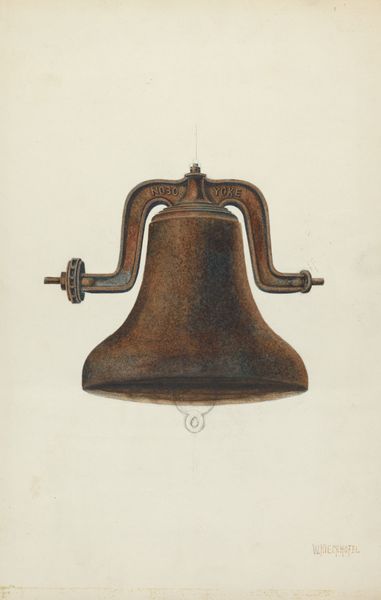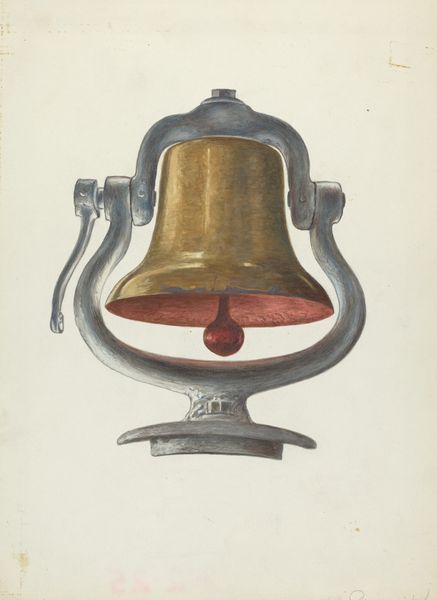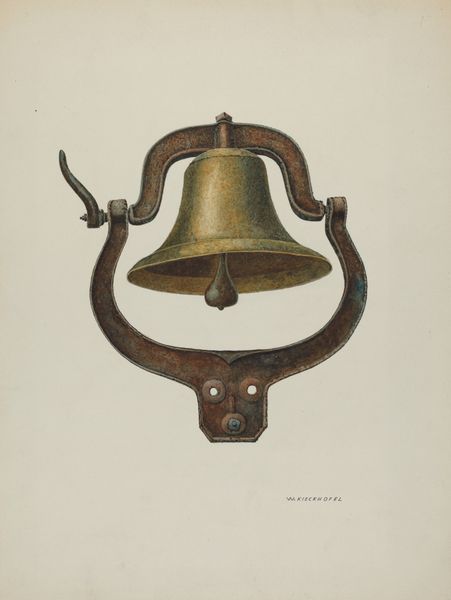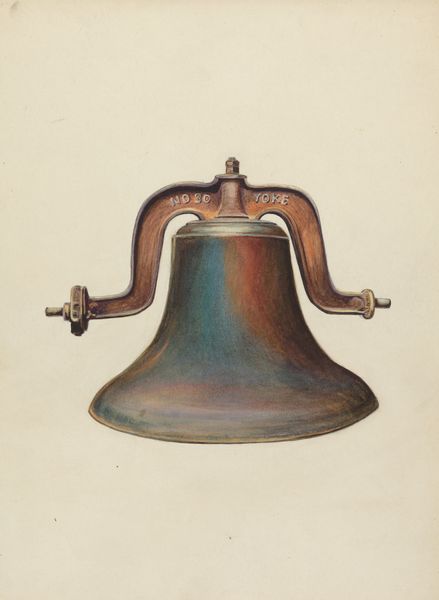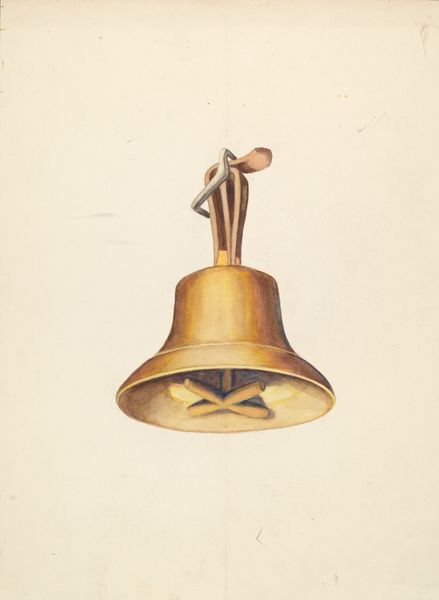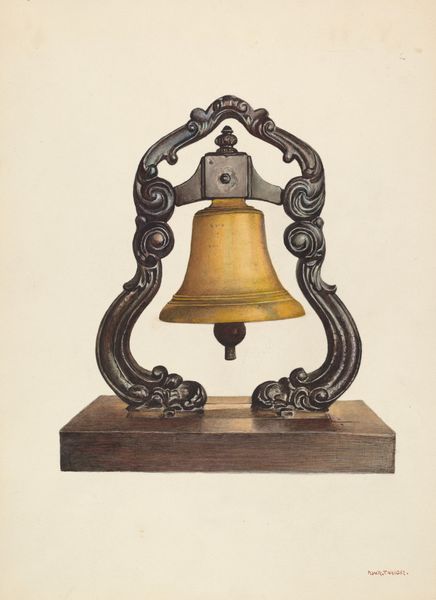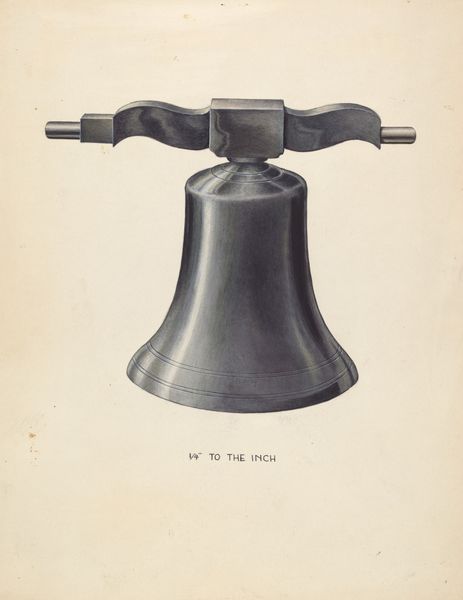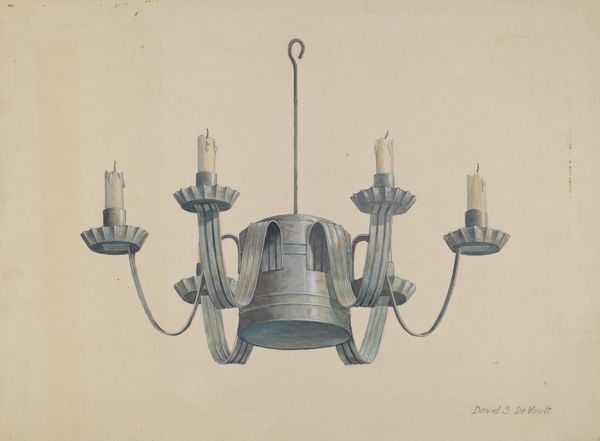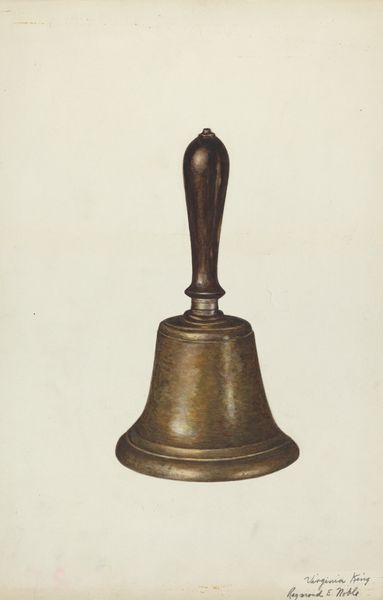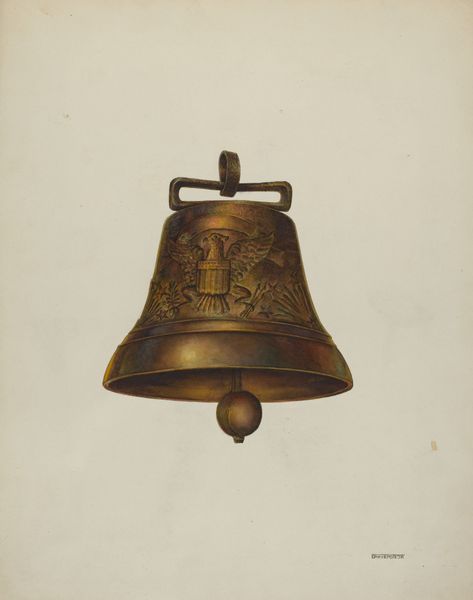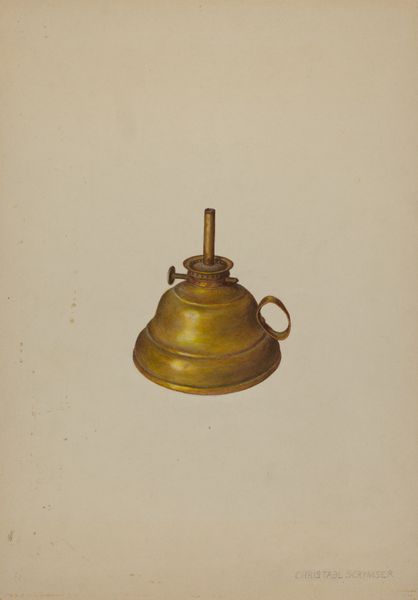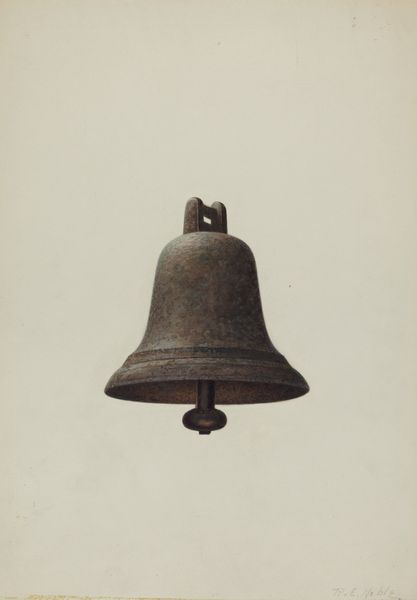
drawing, watercolor
#
drawing
#
charcoal drawing
#
watercolor
#
realism
Dimensions: overall: 35.5 x 27.8 cm (14 x 10 15/16 in.)
Copyright: National Gallery of Art: CC0 1.0
Editor: This is "Bell (From a Locomotive)," made around 1937 by Harry Mann Waddell using watercolor and charcoal. It’s quite detailed and looks almost… utilitarian. What can you tell me about it? Curator: It's interesting to see a mundane, functional object depicted with such care. We should think about the context: 1937, the tail end of the Depression. The locomotive, a symbol of industrial progress, but also a marker of working-class labor. The artist elevates the everyday through close observation. Editor: So, it’s less about the beauty of the bell and more about the labor it represents? Curator: Precisely. The materiality matters. Think about the process: metal forged, shaped, used, and then represented in charcoal and watercolor. These mediums soften the industrial harshness. Was the artist a worker himself? Or someone observing and reflecting on that labor? Editor: I didn’t consider the choice of materials as a conscious decision commenting on labor. Curator: Consider also that realism in art serves a specific purpose in this period. What did it mean to meticulously render an object like this when abstraction was taking hold? Editor: It does seem like a deliberate choice, perhaps to highlight the importance of tangible, working-class objects and labor during that time. The skill of representing metal and light on a simple object is really beautiful! I'm glad you made me think of how the materials and the time period were really chosen purposefully. Curator: It all points towards the social and economic fabric of the era and highlights how something utilitarian could actually be beautiful.
Comments
No comments
Be the first to comment and join the conversation on the ultimate creative platform.
